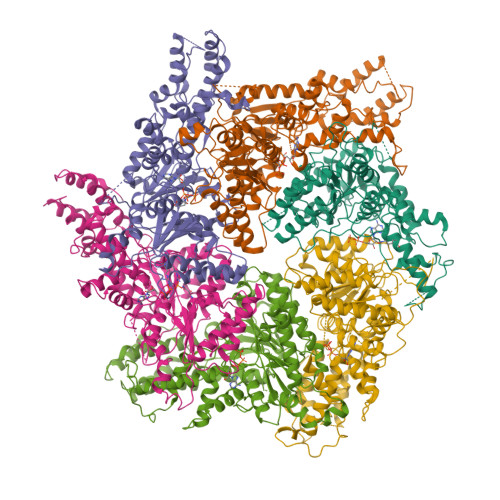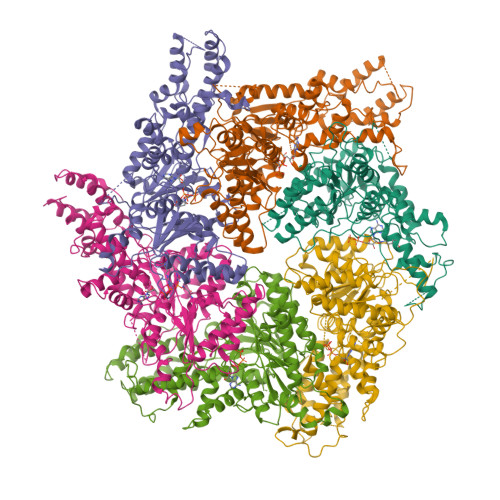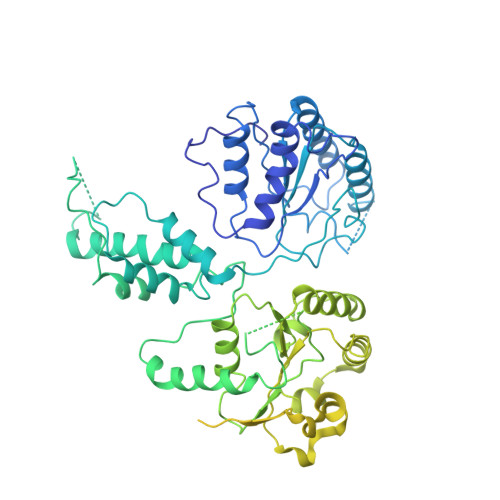Structure of the human ATAD2 AAA+ histone chaperone reveals mechanism of regulation and inter-subunit communication.
Cho, C., Ganser, C., Uchihashi, T., Kato, K., Song, J.J.(2023) Commun Biol 6: 993-993
- PubMed: 37770645
- DOI: https://doi.org/10.1038/s42003-023-05373-1
- Primary Citation of Related Structures:
8H3H, 8JUW, 8JUY, 8JUZ - PubMed Abstract:
ATAD2 is a non-canonical ATP-dependent histone chaperone and a major cancer target. Despite widespread efforts to design drugs targeting the ATAD2 bromodomain, little is known about the overall structural organization and regulation of ATAD2. Here, we present the 3.1 Å cryo-EM structure of human ATAD2 in the ATP state, showing a shallow hexameric spiral that binds a peptide substrate at the central pore. The spiral conformation is locked by an N-terminal linker domain (LD) that wedges between the seam subunits, thus limiting ATP-dependent symmetry breaking of the AAA+ ring. In contrast, structures of the ATAD2-histone H3/H4 complex show the LD undocked from the seam, suggesting that H3/H4 binding unlocks the AAA+ spiral by allosterically releasing the LD. These findings, together with the discovery of an inter-subunit signaling mechanism, reveal a unique regulatory mechanism for ATAD2 and lay the foundation for developing new ATAD2 inhibitors.
Organizational Affiliation:
Department of Biological Sciences, KAIST Stem Cell Center, Basic Science 4.0 Institute, and KI for BioCentury, Korea Advanced Institute of Science and Technology (KAIST), Daejeon, 34141, Korea. carol.cho@kaist.ac.kr.


















